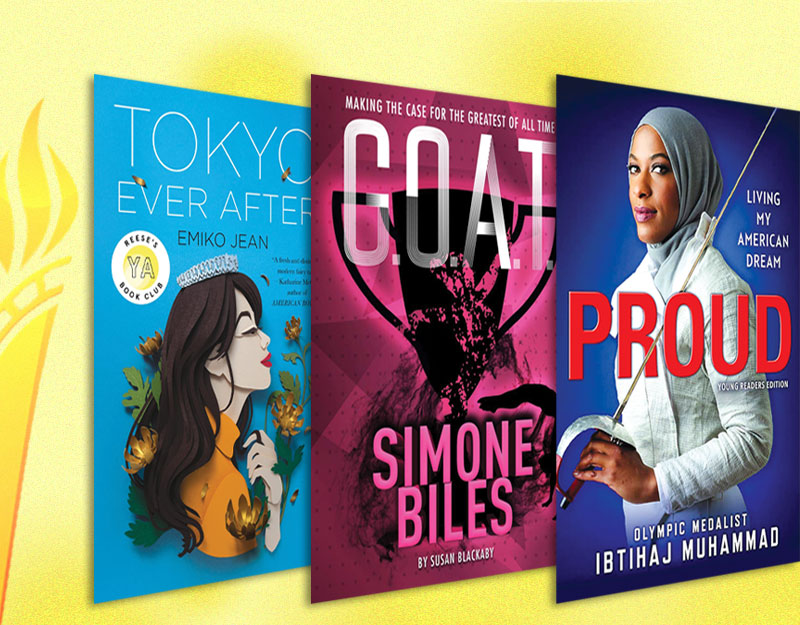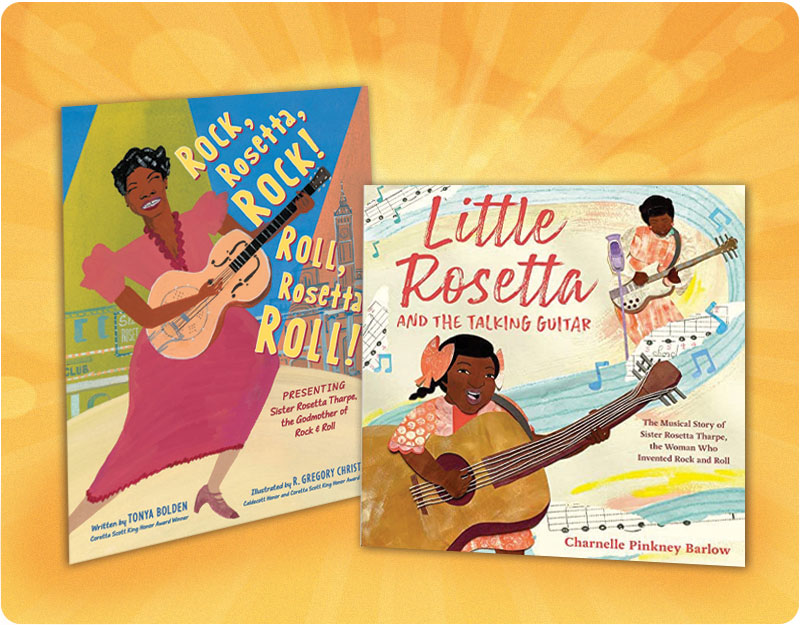The Night Diary
Written by Veera Hiranandani
Published by Dial Books for Young Readers, 2018
ISBN: 9780735228511
Grades 4- 8
Book Review
“Wasn’t independence from the British supposed to free us? We’ve never been less free” (p. 194). So observes twelve-year-old Nisha, the protagonist of Veera Hiranandani’s gorgeous historical novel that offers contemporary readers a window on the Partition of India and Pakistan, the largest human migration in history, and an event that American students, and perhaps teachers, are likely to know little to nothing about. The novel unfolds in the form of a diary kept by Nisha from July 14, 1947 to November 10, 1947. The diary is given to her by Kazi, the Muslim cook who works for Nisha’s Hindu family. In presenting it to her, he tells her it is meant to “make a record of the things that will happen because the grown-ups will be too busy” (p. 3). Nisha decides to use the diary as a way to write to her mother, who died while giving birth to Nisha and her twin brother Amil. Having grown up with their father and their grandmother, Nisha and Amil know very little about their Muslim mother, aside from her paintings, which her father keeps hidden. A month after Nisha receives her diary, on August 14, 1947, Britain relinquishes rule over India after almost two hundred years, and India is partitioned into two countries: Muslim Pakistan and Hindu India. Soon, Nisha and her family must leave their home, now in Pakistan behind, and head to safety in Jodhpur; they must leave Kazi behind, too. As they travel, they face armed refugees, deprivation of food and water, sadness and uncertainty. Nisha writes to her dead mother about the events of their journey as well as her struggle to speak and her brother’s inability to read because “the words jump around and change on him” (p. 8). Nisha initially writes to her mother out of loneliness, but by the end of the novel, she promises to write for her mother, promising that “no matter what happens, you will not be alone” (p. 254). Hiranandani’s writing reads like poetry – sparse, lyrical, and descriptive all at once. This is a story of family and identity; of religious differences and the ways that humans overcome them again and again; and of an important historical moment whose effects endure to this day. Loosely based on the author’s father’s childhood experiences during the Partition, it is ultimately, a story of love. After being pulled from their home and so much that they loved, Nisha and her family are reunited with their beloved Karzi, who was always more family than cook. Indeed, as Nisha writes, “[y]ou can’t split love” (p. 250).
Teaching Ideas and Invitations
Calming Routines. Throughout the novel, readers see Amil turn to his drawing to avoid chores, to keep himself occupied when stuck inside, and to distract himself from the challenges his family faces. Over the course of the novel, we see Nisha begin to understand that cooking does the same for her, as it provides her with a sense of continuity amidst change, comfort amidst chaos, and control when she has none regarding her family’s fate. What are some of the calming routines, hobbies, and habits of your students? Make time for students to share their hobbies and talents with one another. If they have special adults in their lives that mentor them in their hobbies, much like Kazi does for Nisha, invite those special adults in to teach their skills to the rest of the class. Make sure to make time for talk about why they think these routines and hobbies help them. You could bring up mindfulness as part of this conversation.
ADVERTISEMENT
ADVERTISEMENT
Keeping a Night Diary. A couple of weeks before your students start reading the novel, send them home with notebooks or stapled pieces of paper that they personalize, and ask them to start writing a diary entry each night. Encourage them to write about whatever is on their mind about the day. If keeping a “Night Diary” is impossible, you can have your students write in their diary at school. Blogging is another option. As your students make their way through the novel, have them note the different ways in which Nisha’s diary entries grow and change. Have them consider how their own diary entries are growing, changing, or staying the same.
Food as Culture, Food as Sustenance. Within the novel, Hiranandani pays careful attention to food. Food is a way for Nisha to communicate her love without words. Throughout her childhood, food is fundamental to Nisha’s sense of security; her relationship with Kazi provides her with a sense of intimacy when Papa feels distant and remote. Food is a way to celebrate with family and friends, such as when Nisha’s family hosts a “Goodbye Party.” Food grounds Nisha and Amil, almost literally, in their home, such as when they eat cucumbers in their garden. When the novel concludes, Nisha is aware, as she cooks alongside Kazi, that even though she left home, the most important elements of home — the people she loves – came with her. Hiranandani establishes food as a metaphor: the despair of their journey across the border into India is conveyed by the absence of food and water, and cooking rituals. Explore this concept of food – as life-sustaining, culture-sustaining, and familial comfort – with your students. Invite parents of Indian or Pakistani descent, or local community members who are, to cook some of the dishes within the book with students. Have students try to describe the smells and tastes with adjectives. Next, have students share their own comfort foods with one another, by either sharing dishes from home or making them together. Be mindful of food insecure families, and perhaps use school funds, if possible, to purchase ingredients.
Exploring India and Pakistan Solar SystemText Set and Portrait Gallery. Read The Night Diary as one novel among several historical and contemporary novels set in India or Pakistan. Allow students to choose from books set in India, such as Child of Spring by F. Zia, Tiger Boy by Mitali Perkins, Climbing the Stairs by Padma Venkatraman, and Boys without Names by Kashmira Sheth; also allow students to choose from books set in Pakistan, such as Iqbal: A Novel by Francesco D’Adamo, Amal Unbound by Aisha Saeed, and Beneath My Mother’s Feet by Amjed Qamar. As students read their books, support them as they compare and contrast literary observations, such as the protagonist’s character traits, the conflicts at the heart of the book, the use of language, and the themes that emerge within book-based groups and across the different groups. Also, have students note what they are learning about India and Pakistan in the past and in the present, and what questions they have. Use the resources below to learn more, when applicable. Seek out your school or public librarian for additional resources to support students’ exploration of national identity, religion, culture, and food. For a final project, create a portrait gallery, where students either individually or in their groups, create a portrait of their protagonist to share with the class. Invite parents and families and other members of the school community to visit your portrait gallery to learn about the books and to learn more about life and culture in India and Pakistan in the past and present. This resource from the National Portrait Gallery of the Smithsonian Institution may be a useful guide to introduce your students to the concept of a portrait as both fact and fiction.
The Refugee Experience Text Set. Read The Night Diary along with other books that reveal the refugee experience. For example, you could have a Duet text set featuring The Night Diary and Escape from Aleppo by N.H. Senzai. In our Classroom Bookshelf entry on Escape from Aleppo, we shared a range of ideas for teaching about the current Syrian Refugee crisis. Or, draw upon other resources shared in our September 2015 Classroom Bookshelf entry “Children as Refugees: The Syrian Crisis,” which includes a broader range of books that explore the refugee experience over the course of the 20th and early 21st centuries, and our entry on The Red Pencil by Andrea Davis Pinkney.
ADVERTISEMENT
ADVERTISEMENT
Hiranandani Author Duet Text Set: Have some students read the historical novel The Night Diary while other students read Hiranandani’s debut contemporary novel The Whole Story of Half a Girl. What are the similarities and differences across the two books? How do the different time periods in settings establish contrasts between the two books? How do the female protagonists of each book balance their divided religious identities, with Nisha half-Muslim, half-Hindu, and Sonia half-Hindu, half-Jewish? Based on their reading of the two books, how would they describe Hiranandani’s writing style?
Finding Voice as Speakers, Readers, Writers, Listeners and Artists. As Nisha explores her own inability to speak, perhaps a form of selective mutism, have conversations with your students about speaking to friends and family, speaking out in class and speaking up for others. How comfortable are your students in sharing in class conversations? How comfortable are they speaking in small groups? What about around the lunch table or before and after school? How do the dynamics of class make a difference? What responsibility do talkative students have to make space for quiet students to speak? What other ways can students speak? To what extent do students listen to one another? What about other forms of communication? Do some students prefer to write, like Nisha, rather than speak? Do some students prefer to read while others prefer to look at visual images and/or listen, like Amil? Do some students prefer to draw, also like Amil? How can class become more accomodating for students with different communicative needs and preferences? What are some of the ways as a class community that you can cultivate more opportunities for more students to speak and be heard through all of these modalities? Create a list and try to use the list as a guiding document.
Grades 7-8
Partition Duet Text Set. To explore the events of the 1947 Partition from different perspectives, have some of your students read The Night Diary while others read A Moment Comes by Jennifer Bradbury, which tells the story of the Partition from the perspective of three different teenaged characters: Margaret, who is British, Tariq, who is Muslim, and Anupreet, who is Sikh. Use the many resources listed below to help your students better understand the history of India as a British colony, the various leaders who made the decision to partition India into two countries, and the role of Gandhi as a peace activist before, during, and after World War II. As students make their way through the two books, provide them with opportunities to compare and contrast what they are learning about the time period and the perspectives of the various characters within their novels. When finished, have students in small groups create a mural depicting several important events from their novel. Have students present their murals and the details and themes within it to the other students.
Critical Literacy
Memories of the Partition. During and after your reading The Night Diary, have students explore some of the many resources below providing background historical information on the events. Next, have students read through some of the opinion pieces and news stories from 70th anniversary of the Partition in August of 2017. Finally, provide students with the opportunity to hear different first-person accounts of the Partition from oral histories, such as The Bangla Stories, collected by the London School of Economics and the University of Cambridge, the 1947 Partition Archive, The British National Archives, and former British journalist-turned-historian Andrew Whitehead. As students listen, what information do they learn that connects with the history they absorbed by reading The Night Diary? What information conflicts with what they absorbed from the novel? What new information do they discover? Wat differences emerge based on the identities of those survivors of the Partition (Hindu, Muslim, Sikh, Christian)? To share what they are learning, students may choose to make presentations to one another, or to write a class book the collects some of the stories from the oral histories, and retells them in order to share with younger students within your school.
Further Explorations
Digital Resources
Veera Hiranandani’s Official Website
Dial Books for Young Readers Teacher’s Guide for The Night Diary, by Dr. Jennifer Bogard
Resources on the 1947 Partition of India and Pakistan:
“The Road to Partition, 1939-1947,” British National Archives (Primary sources and teaching ideas)
“Panjab 1947: A Heart Divided,” British National Archives, Oral Histories
Indian Independence Resources and Primary Sources, The British Library
“Partition Voices,” Oral Histories Collected by Andrew Whitehead
Bangla Stories, London School of Economics & University of Cambridge, Oral Histories
News Stories on the 1947 Partition:
“The Hidden Story of Partition and its Legacies,” The BBC, March 3, 2011
From the Opinion Section: “Partition at 70,” The New York Times, August 2017
Video – “The History of the India-Pakistan Partition,” CNN, August 14, 2017
“Indian Independence: A Personal Story,” WBUR, August 15, 2017
Information on Colonial India:
“Living in the British Empire – India,” The National Archives, U.K.
“From Empire to Independence: The British Raj in India 1858-1947,” BBC
Books
Bradbury, J. (2015). A moment comes. New York: Atheneum Books for Young Readers.
D’Adamo, F. (2003). Iqbal: A novel. New York: Atheneum Books for Young Readers.
Hiranandani, V. (2012). The whole story of half a girl. New York: Yearling.
O’Brien, A. (2009). After Gandhi: One hundred years of nonviolent resistance. Watertown, MA: Charlesbridge.
Perkins, M. (2013). Tiger boy. (Illus. by J. Hogan). Watertown, MA: Charlesbridge.
Qamar, A. (2008). Beneath my mother’s feet. New York: Atheneum Books for Young Readers.
Saeed, A. (2018). Amal unbound. New York: Nancy Paulsen Books.
Sheth, K. (2010). Boys without names. New York: Balzar and Bray.
Venkatraman, P. (2008). Climbing the stairs. New York: Speak.
Zia, F. (2013). Child of spring. Atlanta, GA: Peachtree.
Filed under: Fiction, Historical Fiction
About Mary Ann Cappiello
Mary Ann is a professor of language and literacy at Lesley University. A former public school language arts and humanities teacher, she is a passionate advocate for and commentator on children’s books. Mary Ann is the co-author of Teaching with Text Sets (2013) and Teaching to Complexity (2015) and Text Sets in Action: Pathways Through Content Area Literacy (Stenhouse, 2021). She has been a guest on public radio and a consultant to public television. From 2015-2018, Mary Ann was a member of the National Council of Teachers of English's Orbis Pictus Award for Outstanding Nonfiction (K-8) Committee, serving two years as chair.
ADVERTISEMENT
ADVERTISEMENT
SLJ Blog Network
Behind the Scenes Q&A: DALMARTIAN by Lucy Ruth Cummins
Cape Verde Gets Its Day In the Sun: A Q&A with Janet Costa Bates
Number Call | Review
It’s Time for More Mock Newbery Suggestions
Navigating the High School and Academic Library Policy Landscape Around Dual Enrollment Students
ADVERTISEMENT








